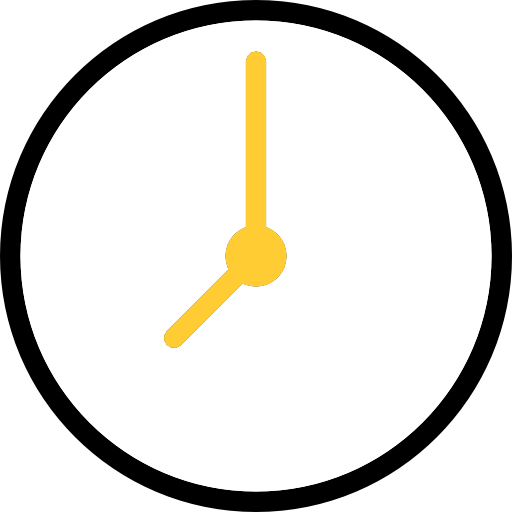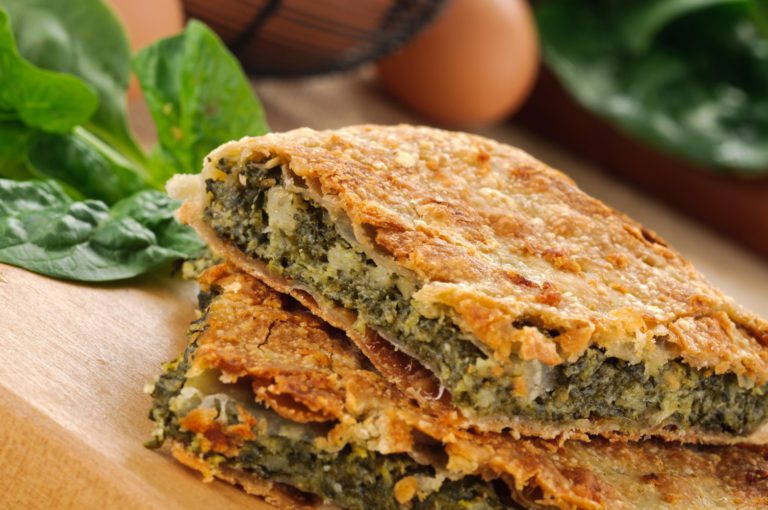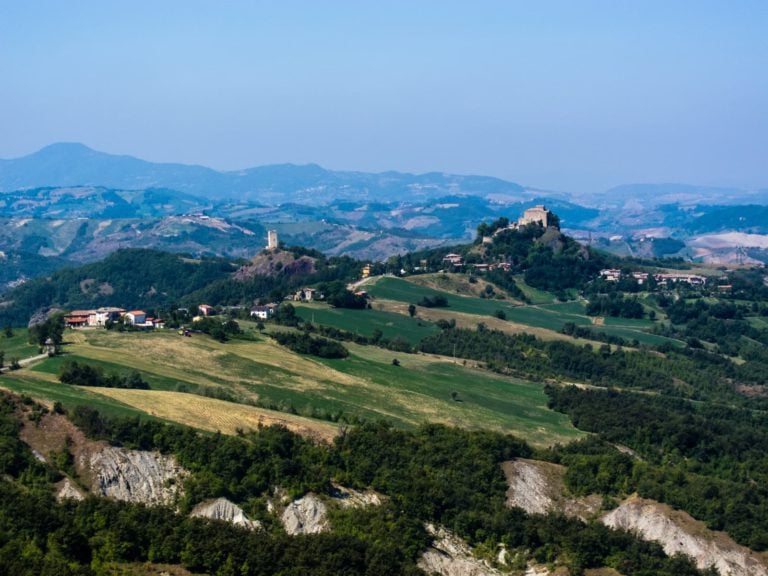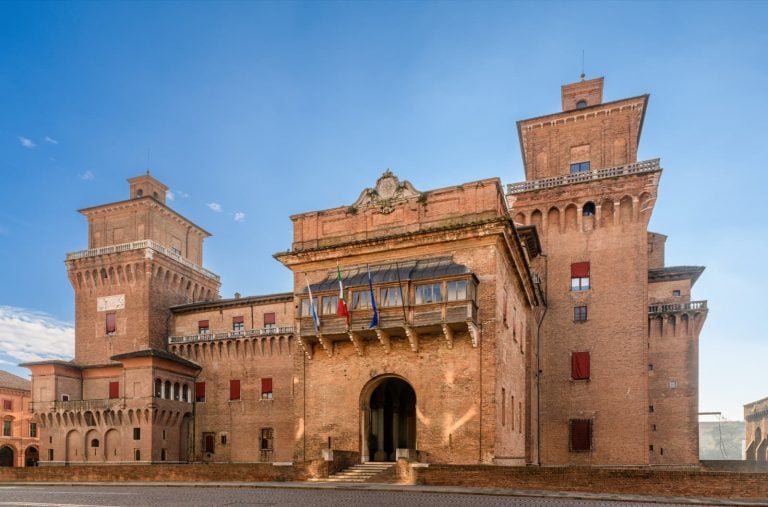Well-connected by public transport, easy to get around on foot and wheelchair-friendly, Reggio Emilia is a must-see destination for those who enjoy the charm of less crowded art cities, yet worthy of a trip.
Boasting three records (the Italian flag was born here, as well as the first kindergarten and the first municipal pharmacy of the country), the city also has much to offer in terms of art, culture and architecture.
So, all we need to do now is answer the question ‘what to see in Reggio Emilia?’ and set off on a pleasant 10-stage walk in the heart of the city.
1. Piazza San Prospero
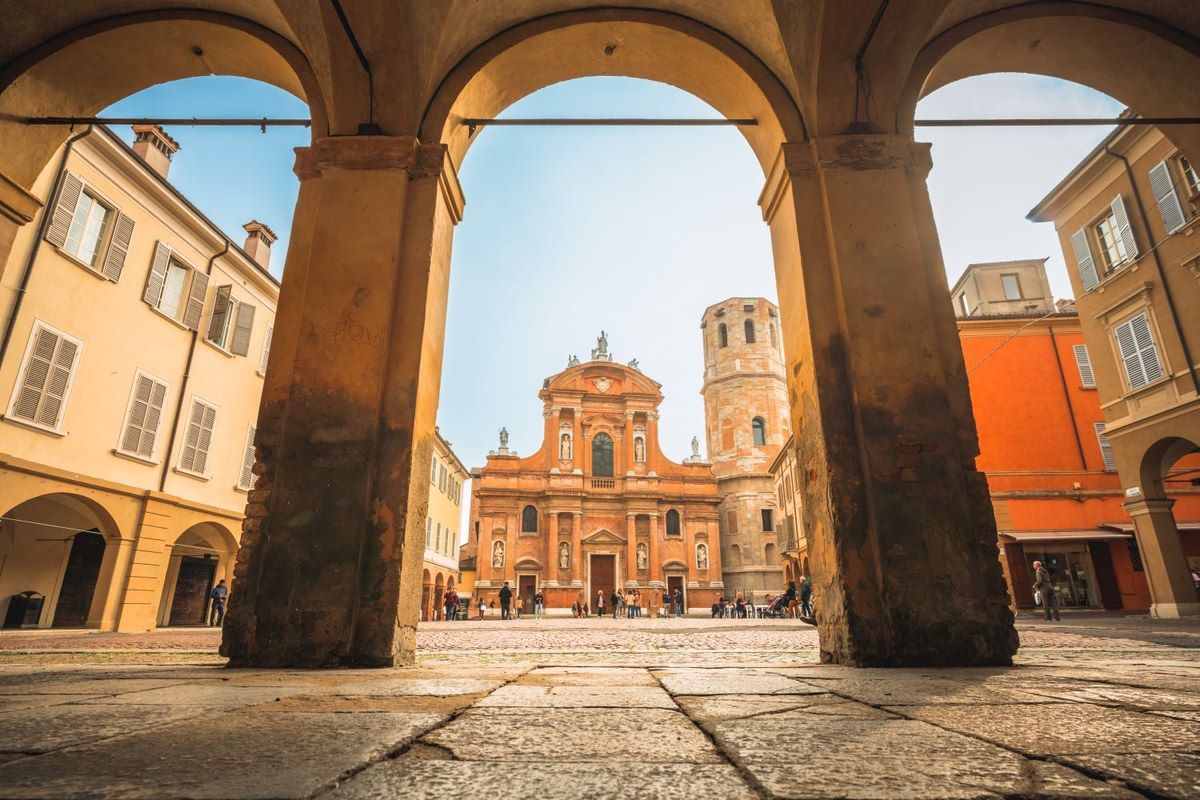
Our tour begins in a square nicknamed ‘céca’, meaning small. The site of the weekly market and one of the most popular meeting places for the people of Reggio Emilia, Piazza San Prospero owes its name to the medieval church dedicated to the city’s patron saint, which towers here with its Baroque façade and unfinished octagonal bell tower.
Besides the church, the square is overlooked by arcaded buildings and elegant palaces, but it is also possible to see the back of the cathedral, located a few steps away.
2. Piazza Prampolini
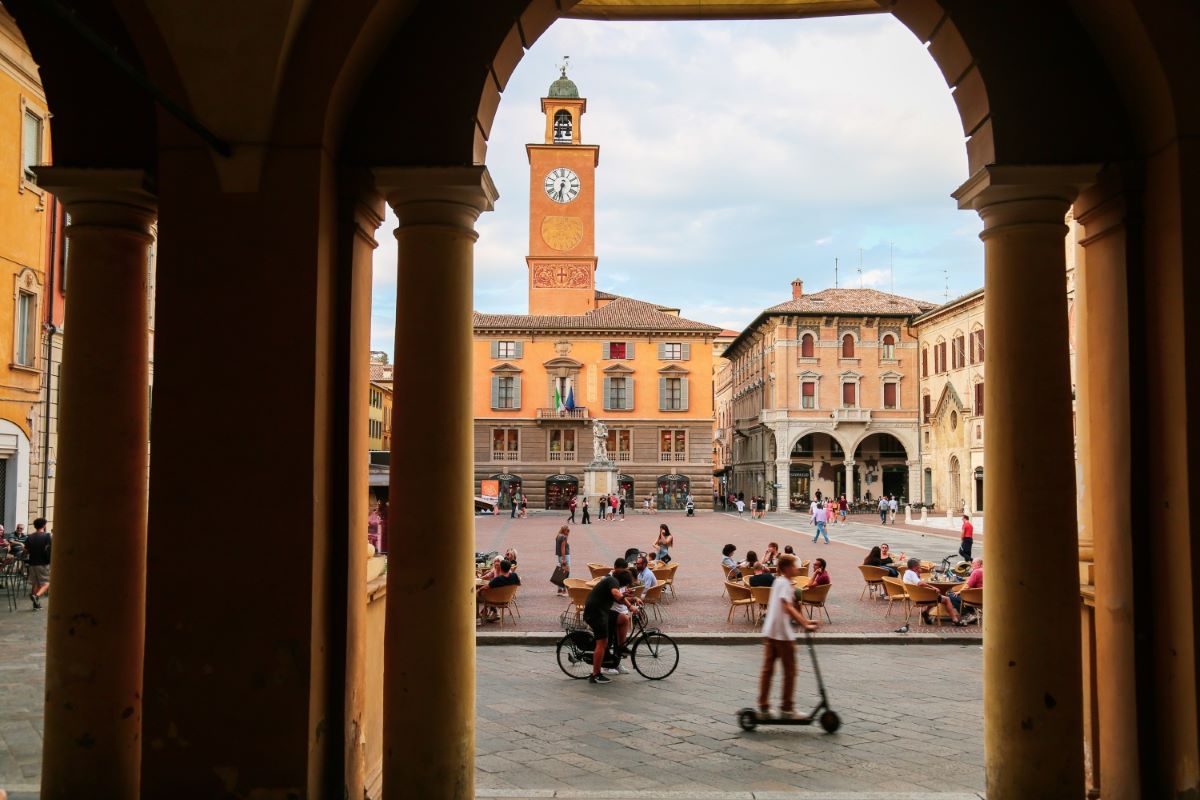
Going from square to square, we get to Piazza Prampolini, the heart of the city. It is reached by the Broletto passage, which leads us straight to the large square housing some of the city’s most iconic buildings.
We have already mentioned one of them, the Cathedral, which we will visit in a moment. Then there is the City Hall with the Sala del Tricolore (Tricolour Hall), the Bordello Tower (now a vantage point, once adjoining the city brothel), and the Palazzo del Podestà with the Torre dell’Orologio (Clock Tower).
Wandering around the square we can also notice a fountain, named after the stream that flows through the city: the Crostolo.
3. Cattedrale di Santa Maria Assunta
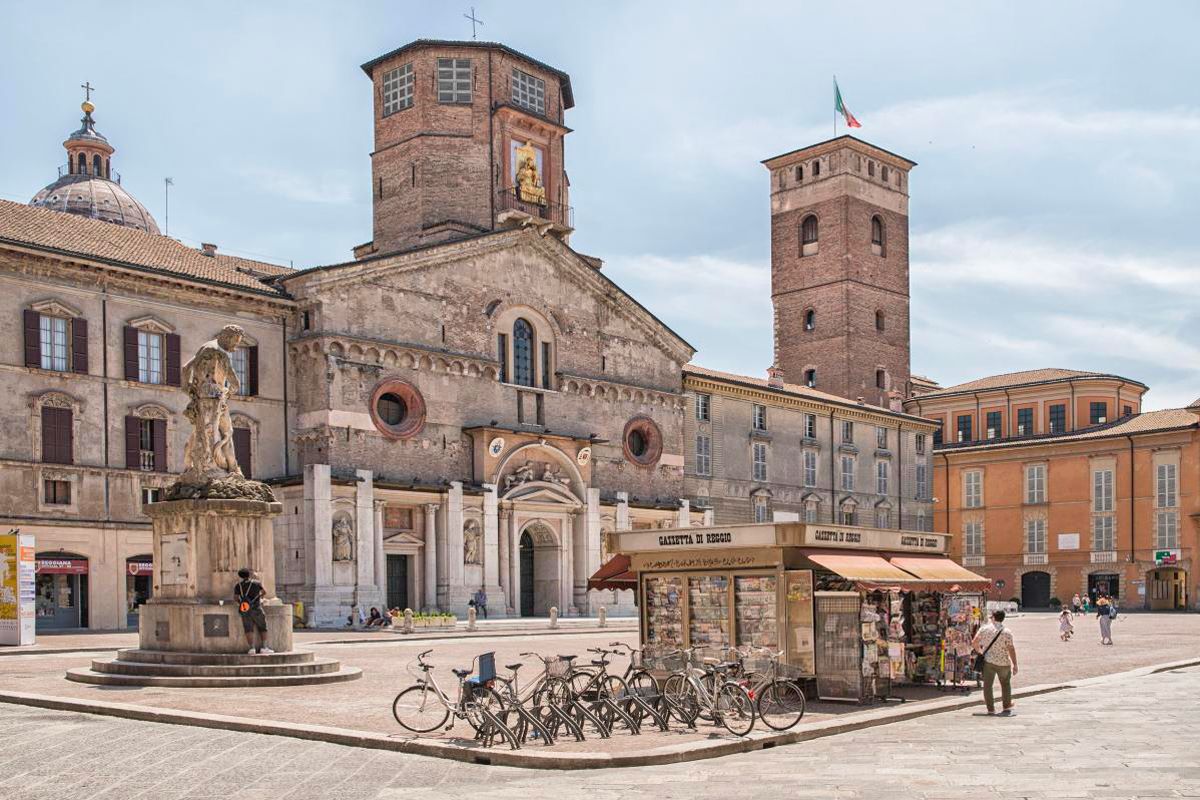
If Piazza Prampolini were a play, the Cathedral of Santa Maria Assunta would certainly be one of the protagonists. Built in 857, the building mixes Romanesque style with 15th-century remakes as well as contemporary art. Inside the church we can find works of arte povera and conceptual art by important 20th-century artists such as Jannis Kounellis, Claudio Parmiggiani and Ettore Spalletti.
The cathedral also houses an altarpiece from 1626 depicting the Assumption of the Virgin Mary, Saint Peter in the Chair and Saint Jerome attributed to the famous painter Guercino.
Speaking of the exterior, let us pause to admire the gilded statue that stands out on the façade of the church. It is the Madonna and Child with the Fiordibelli couple, the work of Reggio goldsmith Bartolomeo Spani.
A few metres away, embedded in the Bishop’s Palace, we can also see the Baptistery of St John the Baptist.
4. Sala e Museo del Tricolore
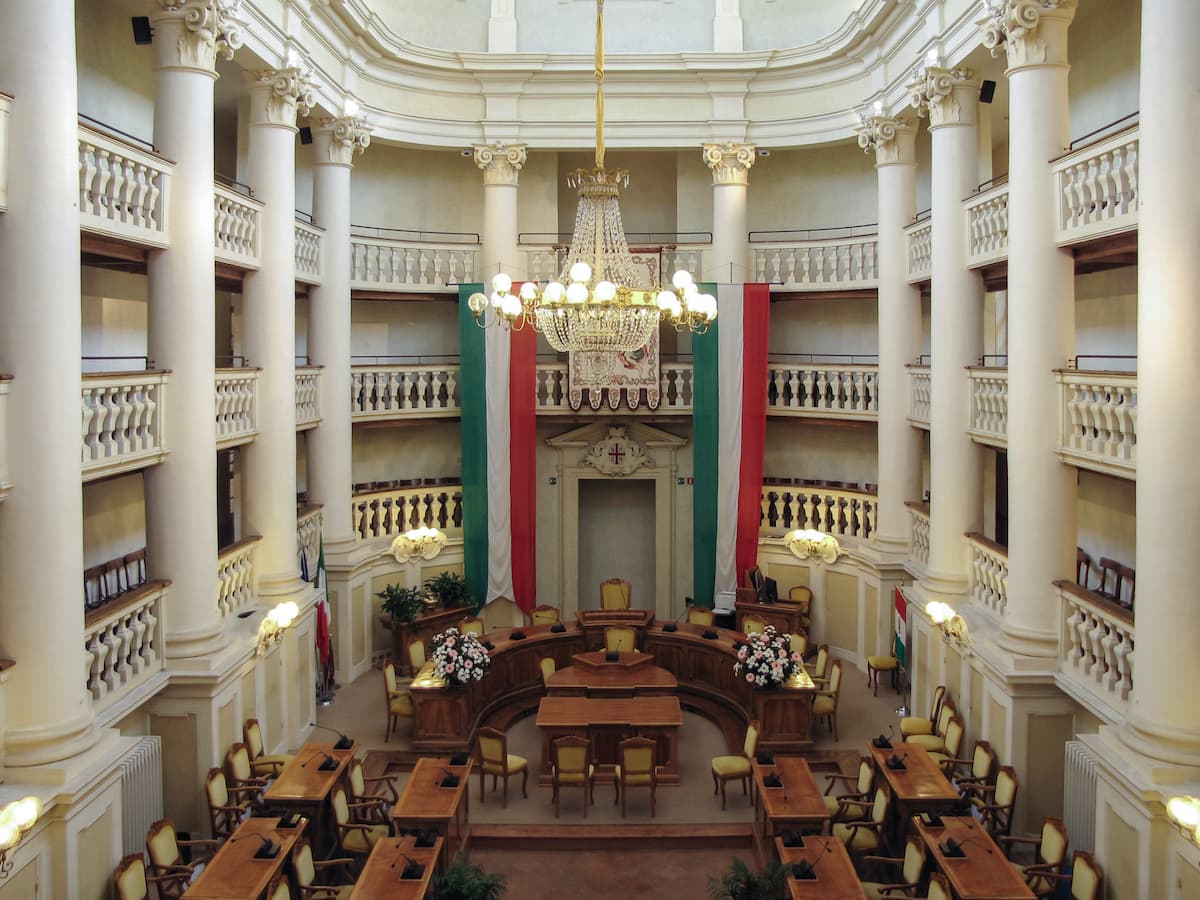
Let’s remain in Piazza Prampolini to find out the next stop on our tour. Housed inside the Palazzo del Comune, the Sala del Tricolore (Tricolour Room) preserves the memory of a historical event of national importance. The Italian green, white and red flag was born here in 1797, and later became the symbol of our country. This event took place during the proclamation of the Cispadane Republic by the free cities of Reggio, Modena, Bologna and Ferrara, and is today remembered as an act of rebellion and civil commitment by the city.
Opposite the Sala del Tricolore, seat of the city council, you can also visit the Tricolour Museum, which traces both the history of the flag and the events that led from the Napoleonic era to the Unification of Italy. In 2017, the collection was also enriched with a selection of contemporary works related to the ‘Ninety artists for one flag’ project.
5. Piazze dei Teatri
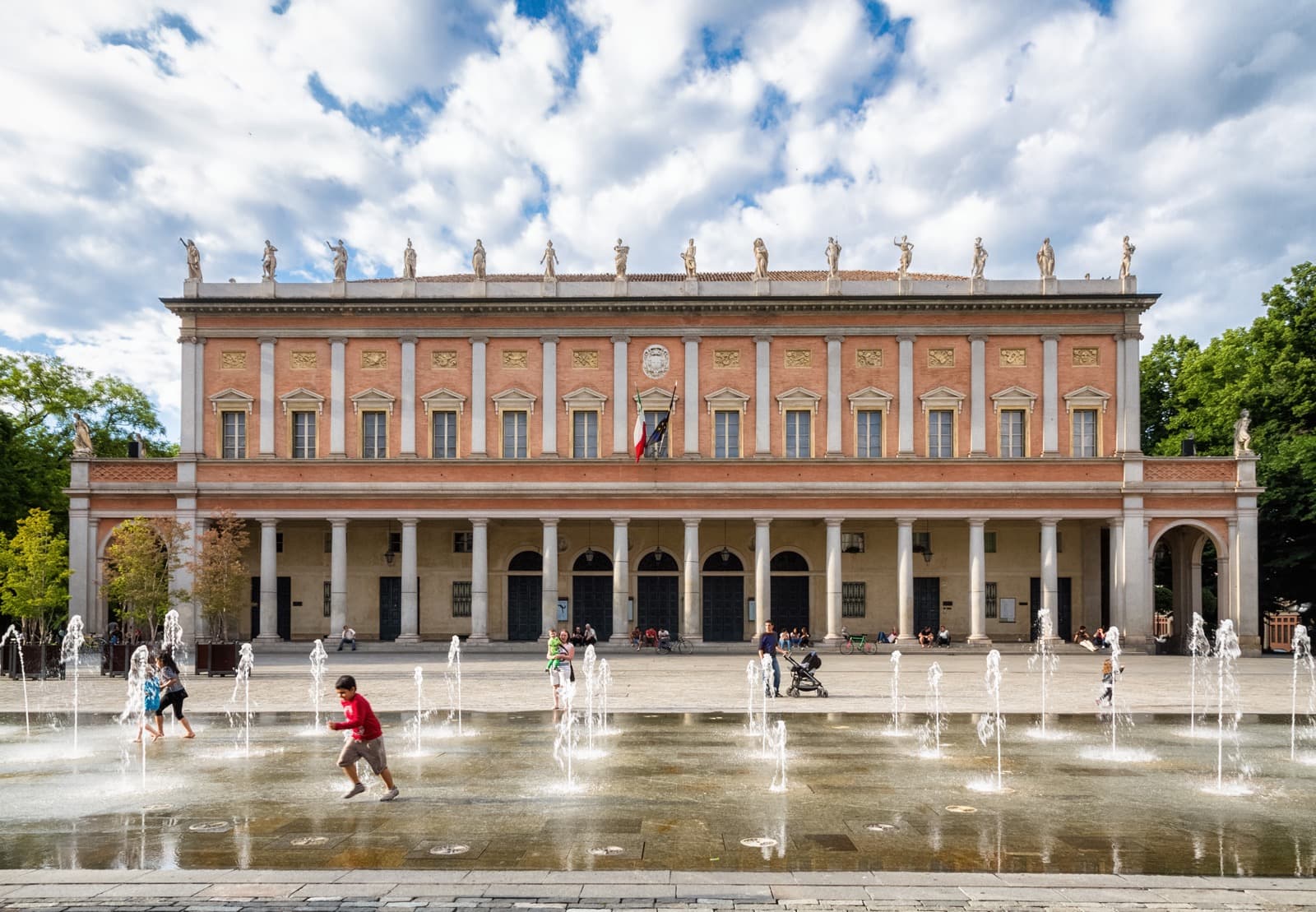
Reggio Emilia is not only the city of the Tricolour, but also the city of theatres. In the large space formed by Piazza della Vittoria and Piazza Martiri del 7 Luglio – located next to each other – there are three theatres, each one with its own specific programme. Opera, concerts and ballet are staged at the Teatro Municipale Valli; prose is at home at the Teatro Ariosto, located on the western side of the square, while the Teatro della Cavallerizza hosts contemporary and experimental shows.
In addition to the theatres, the square is also home to the Parco del Popolo gardens, the Palazzo dei Musei, which we will discuss next, the neo-Gothic Galleria Parmeggiani, and other prestigious buildings and monuments inspired by the city’s recent history.
6. Palazzo dei Musei
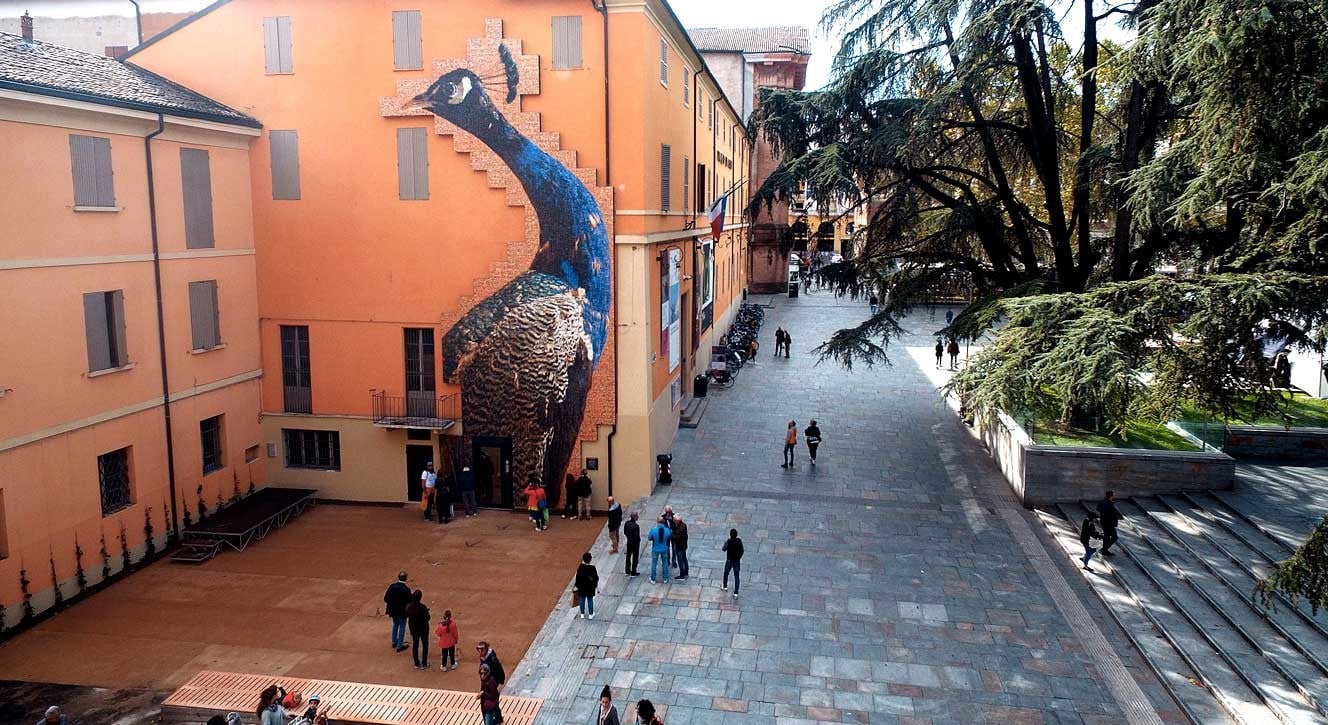
A tour of the Palazzo dei Musei is certainly one of the things to do in Reggio Emilia. The museum is a world of amazing collections spanning from Roman Reggio to the contemporary age.
This former Franciscan convent houses the collections of great local scientists and naturalists such as Lazzaro Spallanzani, which can be visited on the first floor, and interesting collections of zoology, botany, anatomy and ethnography. The remains of the Valentina whale – on display in the fauna section – are definitely worth mentioning: this cetacean lived more than three million years ago in the area of the Reggio Emilia hills.
The top floors of the museum were recently refurbished by architect Italo Rota, and include a section dedicated to the history of the city as well as a collection of photos from the Fotografia Europea project.
7. Basilica della Beata Vergine della Ghiara
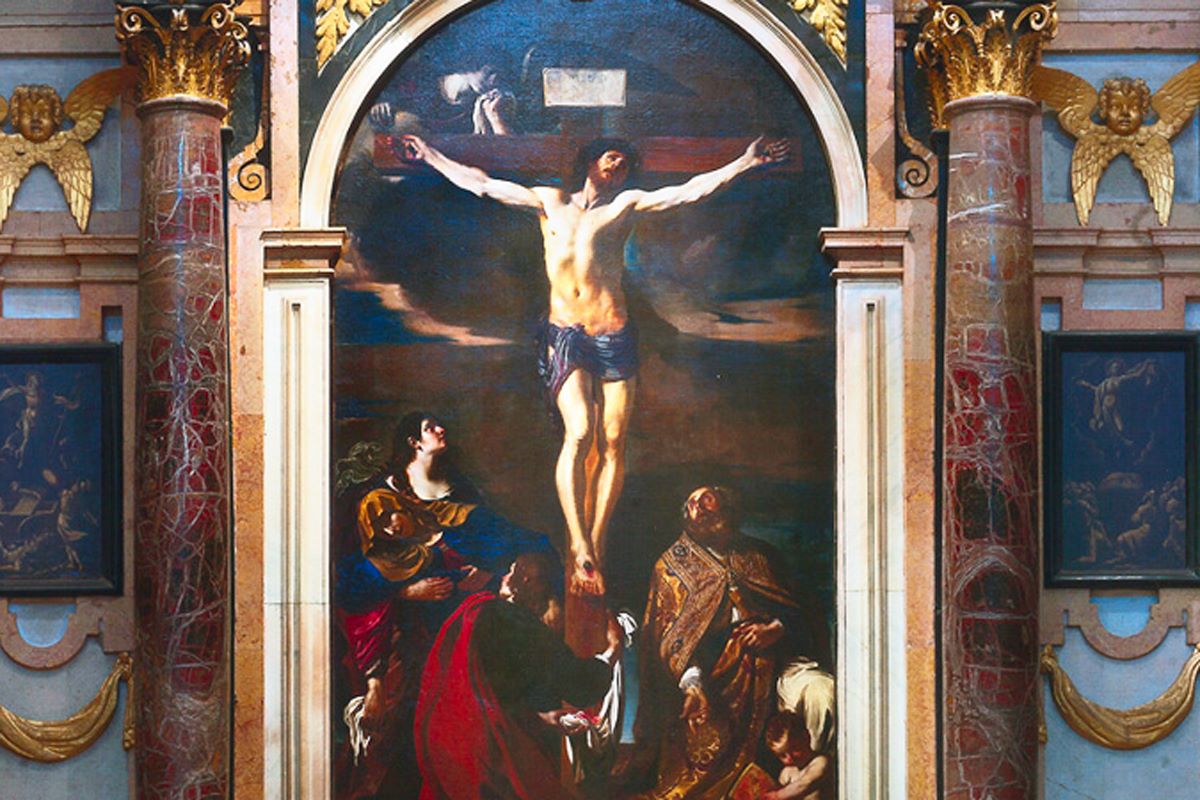
One of the city’s most important religious sites, the Basilica of the Beata Vergine della Ghiara was built at the turn of the 16th and 17th centuries to provide a worthy home for an allegedly miraculous portrait of the Madonna.
The sanctuary of the Ghiara – meaning gravel, referring to the river that once flowed here – is undoubtedly worth a visit because of its extraordinary decorations. Inside, we can observe some works by great Emilian artists of the first half of the 17th century, including Ludovico Carracci from Bologna and Guercino from Cento, who painted a marvellous Crucifixion of Christ.
8. Piazza Fontanesi
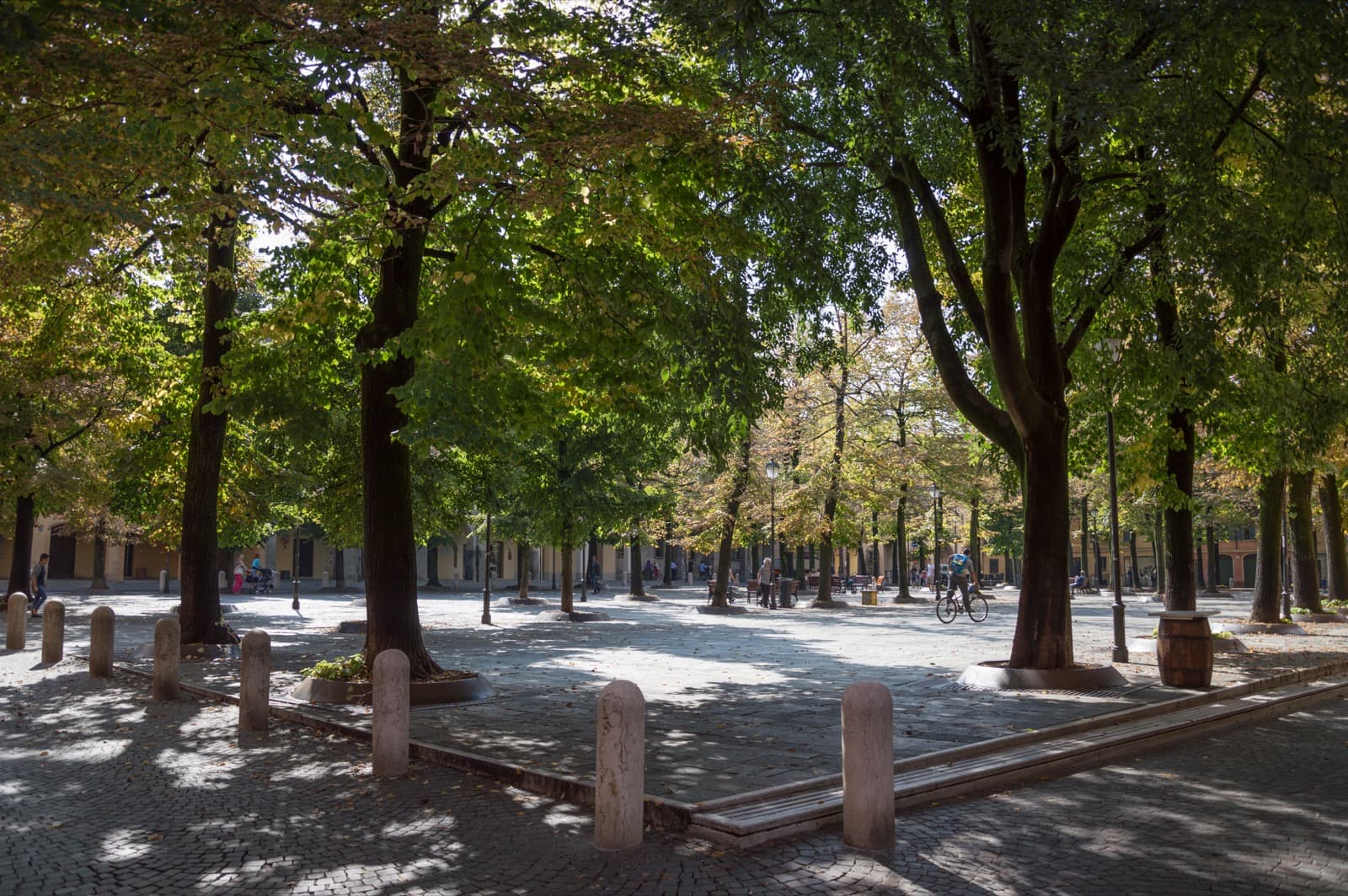
At this stage of our Reggio Emilia tour we head to Piazza Fontanesi, the perfect place for a refreshing stop.
In addition to being one of the city’s most charming squares, featuring arcades and rows of lush trees, it is also a favourite place for the people of Reggio Emilia, who like to meet for an aperitivo in one of the many ‘distese’ of the square (a term used by the locals to designate the terraces of bars and restaurants).
Don’t fail to check out the cobblestones on the western side of the square, reminiscent of the Canale del Guazzatoio that once flowed here, and the ‘Braccia reggiane’ on the pavement on the northern side, evidence of the units of measurement used by local merchants.
9. Chiostri di San Pietro
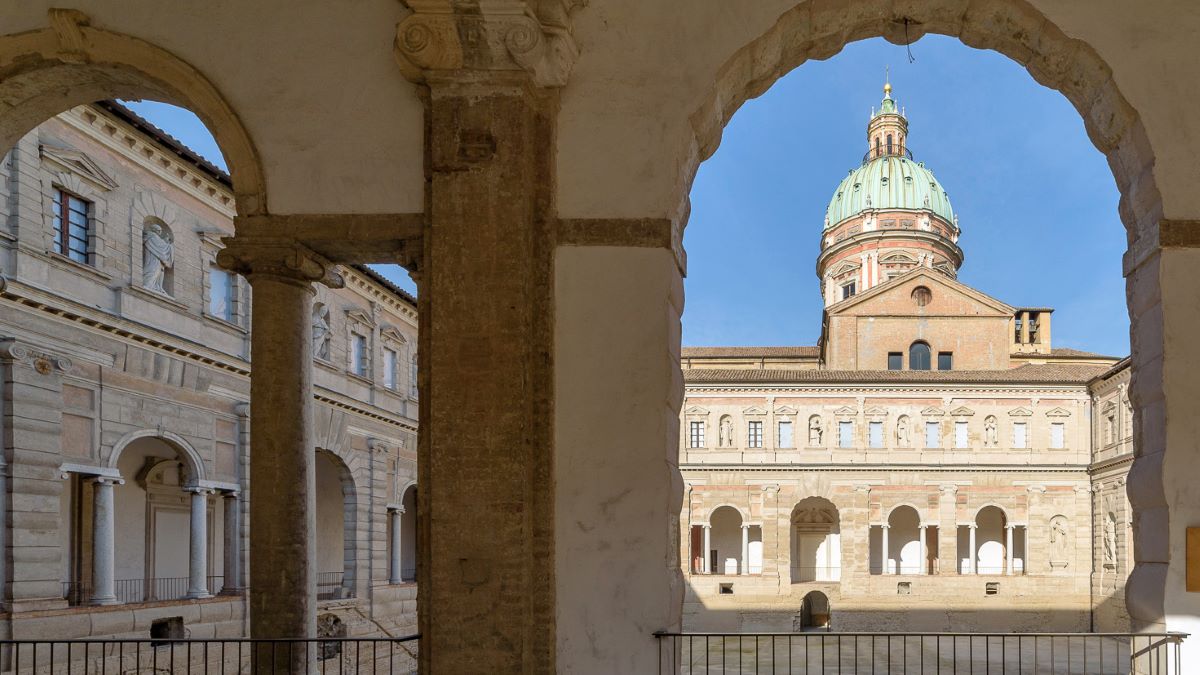
Home to temporary exhibitions such as Fotografia Europea, it is not widely known that the Chiostri di San Pietro can also be visited freely during the year.
It is an imposing complex, returned to the city in 2019 after careful restoration work that has deliberately maintained an unfinished character. A former 16th-century monastery, the building is arranged around two cloisters: a smaller one, in late 15th-century style, and a larger, more scenic one inspired by the Mannerist movement and the works of Giulio Romano.
10. Gromae Locus
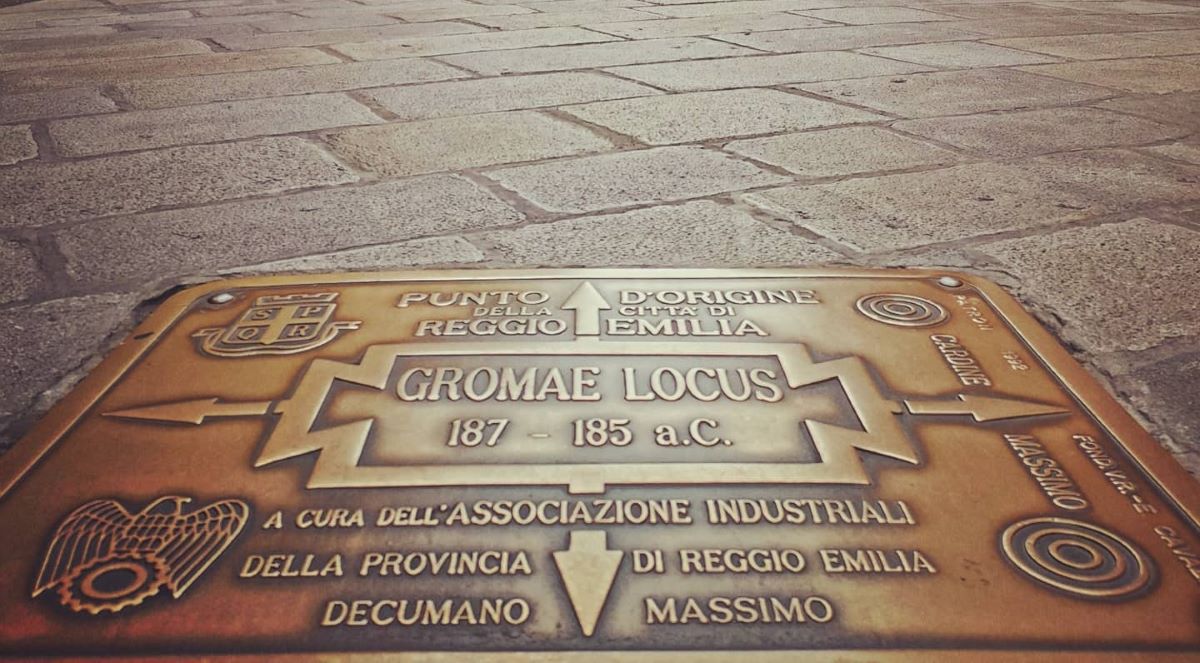
Let’s end our Reggio Emilia tour by returning to the origins of the city, specifically its Roman foundation. Walking along the Via Emilia, let’s stop at numbers 7-9 to look for the plaque on the ground reading ‘Gromae Locus, 187-185 BC. The place where the city of Reggio Emilia was founded’.
It was precisely in this area that the Romans laid their ‘groma’, the pole that identified the meeting point of the cardo (Via Roma) and decumanus (the Via Aemilia itself), as well as the place where the ancient Romans used to found a new city.
Author

Maria Grazia Masotti
An eternal dreamer, but I try to stay grounded. I was raised in the countryside but I love big cities. I’m always ready for a trip, as long as it’s sustainable.
You may also like
History and recipe of the traditional Erbazzone of Reggio Emilia
by Elisa Mazzini /// April 8, 2024
5 Castles not to be missed in the Lands of Matilde di Canossa
by Elisa Mazzini /// February 13, 2020

Interested in our newsletter?
Every first of the month, an email (in Italian) with selected contents and upcoming events.
